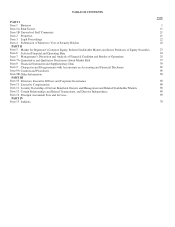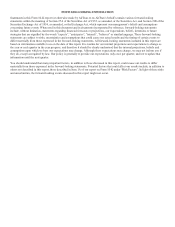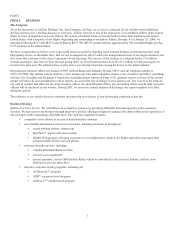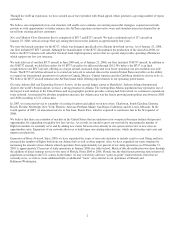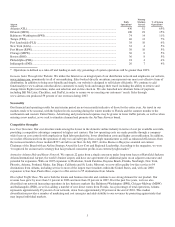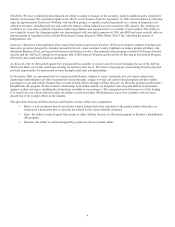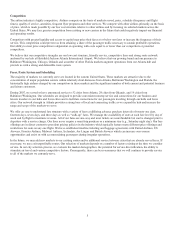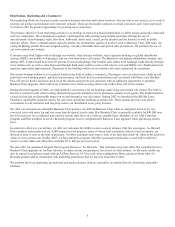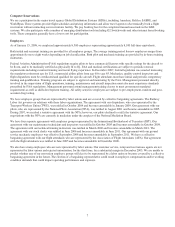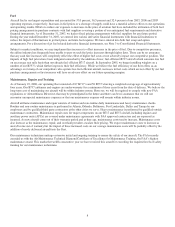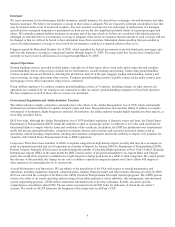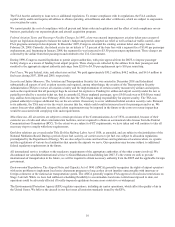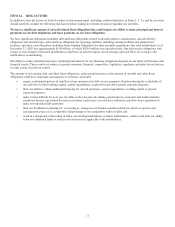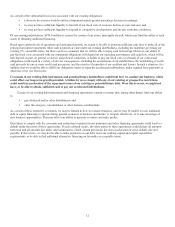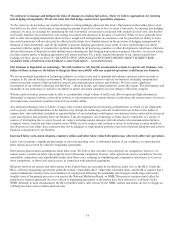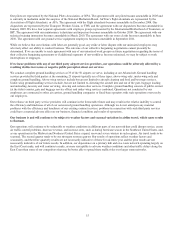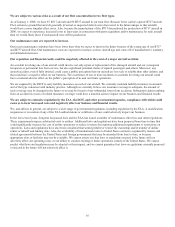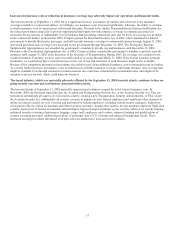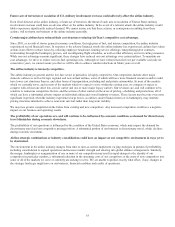Airtran 2007 Annual Report Download - page 14
Download and view the complete annual report
Please find page 14 of the 2007 Airtran annual report below. You can navigate through the pages in the report by either clicking on the pages listed below, or by using the keyword search tool below to find specific information within the annual report.
8
Fuel
Aircraft fuel is our largest expenditure and accounted for 37.0 percent, 36.5 percent and 32.4 percent of our 2007, 2006 and 2005
operating expenses, respectively. Increases in fuel prices or a shortage of supply could have a material adverse effect on our operations
and operating results. Efforts to reduce our exposure to increases in the price of aviation fuel have included the utilization of both fuel
pricing arrangements in purchase contracts with fuel suppliers covering a portion of our anticipated fuel requirements and derivative
financial instruments. As of December 31, 2007, we had no fixed pricing arrangements with fuel suppliers for any future period.
During the year ended December 31, 2007, we entered into various derivative financial instruments with financial institutions to
reduce the impact of fluctuations in jet fuel prices on future fuel expense. We have entered into both fuel swap and option
arrangements. For a discussion of jet fuel related derivative financial instruments, see Note 3 to Consolidated Financial Statements.
Subject to market conditions, we may implement fare increases to offset increases in the price of fuel. Due to competitive pressures,
the airline industry has frequently been unable to pass on such fuel price increases through higher fares. There can be no assurance
that any such fare increases will completely offset the effect of higher fuel costs or not adversely impact our competitive position. The
impacts of high fuel prices have been mitigated somewhat by the addition of new, fuel-efficient B737 aircraft which consume less fuel
on an average seat mile basis than our already fuel efficient B717 aircraft. In September 2005, we began installing winglets on a
number of our B737’s which further improves their fuel efficiency. While we believe the fuel efficiency of our fleet offers us an
advantage over many of our competitors who operate less fuel-efficient aircraft, increases in fuel costs which are not offset by our fuel
purchase arrangements or fare increases will have an adverse effect on our future operating margins.
Maintenance, Repairs and Training
As of January 23, 2008, our operating fleet consisted of 87 B717’s and 50 B737’s having a weighted-average age of approximately
four years. Our B737 airframes and engines are under warranty for a minimum of three years from the date of delivery. We believe the
long-term cost of maintaining our aircraft will be within industry norms. However, we will be required to comply with new FAA
regulations or Airworthiness Directives that may be promulgated in the future and there can be no assurance that we will not
encounter unexpected maintenance expenses or that our maintenance expense will remain within industry norms.
Aircraft airframe maintenance and repair consists of routine and non-routine daily maintenance and heavy maintenance checks.
Routine and non-routine maintenance is performed in Atlanta, Orlando, Baltimore, Fort Lauderdale, Dallas and Tampa by our
employees and by qualified third party contractors at the other cities we serve. Heavy maintenance is performed by qualified outside
maintenance contractors. Maintenance repair costs for major components on our B717 and B737 aircraft, including engines and
auxiliary power units (APUs) are covered under maintenance agreements with FAA approved contractors and are expensed as
incurred. As new aircraft come out of their warranty period and as they age, maintenance costs tend to increase. Maintenance costs
also increase as the maintenance, repair, and overhaul providers escalate their pricing. We expect maintenance costs to increase as
aircraft come out of warranty but the impact of these increased costs on our average maintenance costs will be partially offset by the
addition of newly delivered aircraft into the fleet.
Our maintenance technicians undergo extensive initial and ongoing training to ensure the safety of our aircraft. The FAA recently
awarded us with the Air Maintenance Technical Diamond Certificate of Excellence for Maintenance Training, the FAA’s highest
maintenance award. This marks the twelfth consecutive year we have received this award for exceeding the required levels of safety
training for our maintenance technicians.



